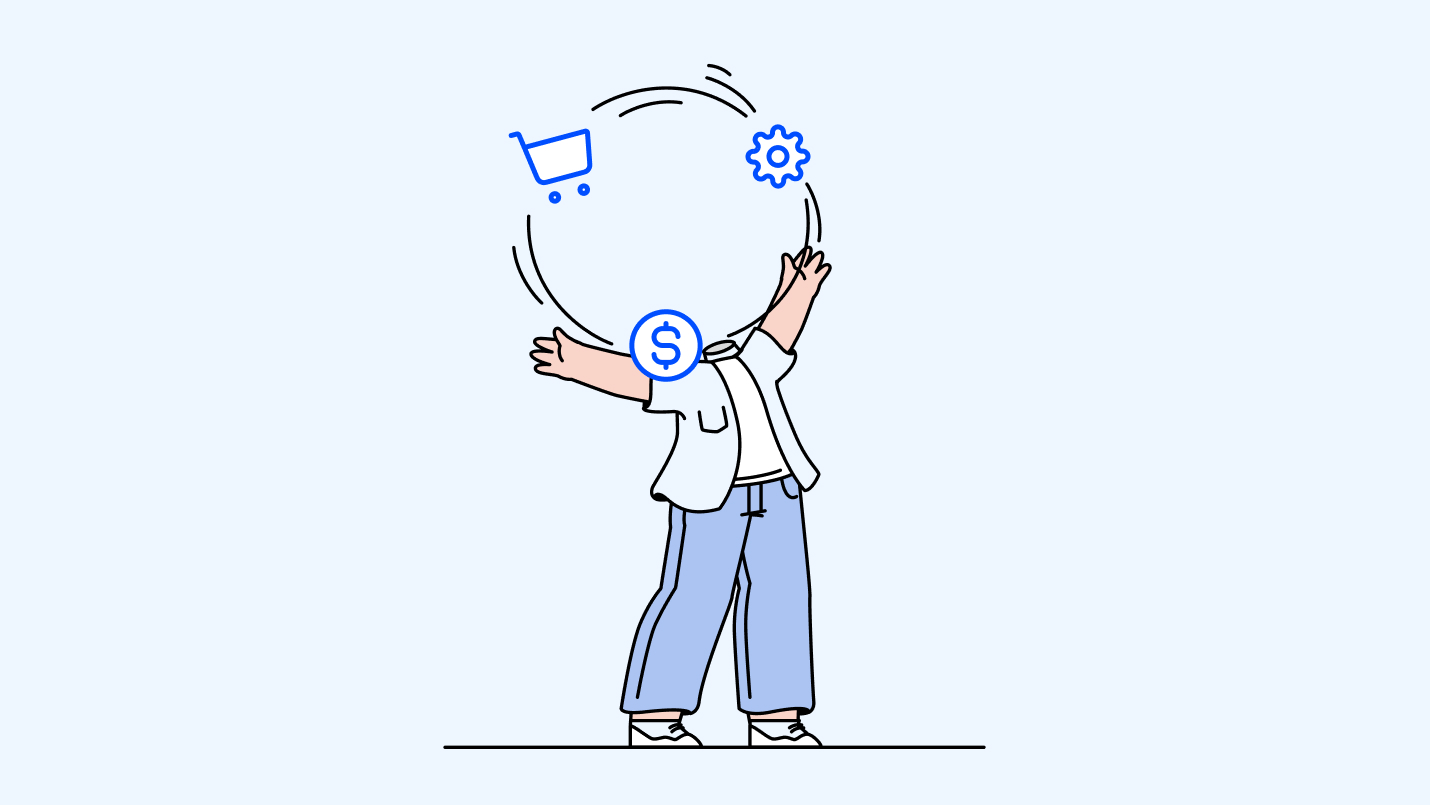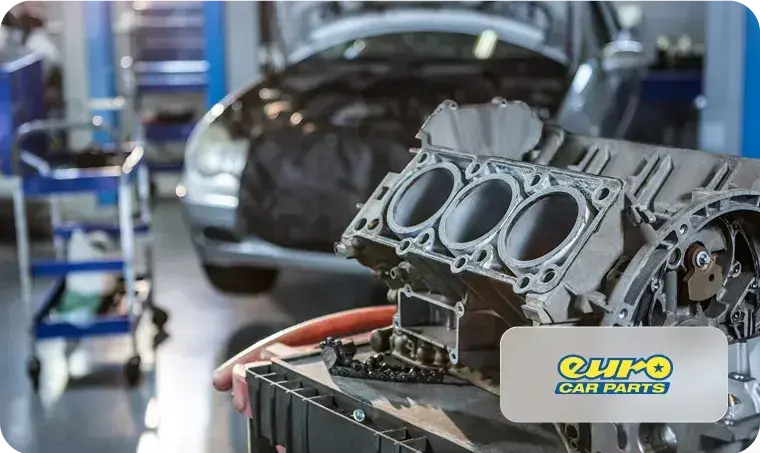Headless commerce refers to eCommerce architecture where the front-end customer experience has been decoupled from the back-end functionality of your store, making it easier to create customized experiences for your sales channels across websites, apps, social media and more.
More than ever before, the rigid inflexibility of traditional commerce platforms is not keeping pace with customer expectations and the need for agility to changing technologies. Headless commerce introduces opportunities to meet these demands quickly and at scale, helping boost sales and brand loyalty.
The key benefits of headless commerce are the following:
- It allows more development flexibility, which in turn supports business agility
- Helps support omnichannel experience
- Speeds up time to market
- Improves personalization efforts
- Backend and front-ends can scale independently
- Improves site performance
- Supports seamless integrations
- Is technology-agnostic, supporting IT teams
- Is a competitive differentiator
- Greater marketing independence to improve KPIs
While only 22% of retailers have headless solutions today, according to Market Digits, 63% plan to integrate headless commerce into their operations. Let’s explore some of the reasons in more detail. But first, if you want to learn more about headless commerce, we invite you to read our comparison of traditional vs headless commerce.
1. Flexible and agile
Flexibility is a key benefit of headless commerce. Flexibility refers to the overall technology infrastructure, which separates the back end and front end, which ultimately provides greater flexibility from a development perspective—using APIs to add new technologies and optimizing each front-end—and marketer / sales / business users, who can experiment with campaigns without the same reliance on development.
While headless commerce comes with a higher front-end developer cost, it introduces the kind of flexibility eCommerce businesses need to create rich experiences across each digital touchpoint.
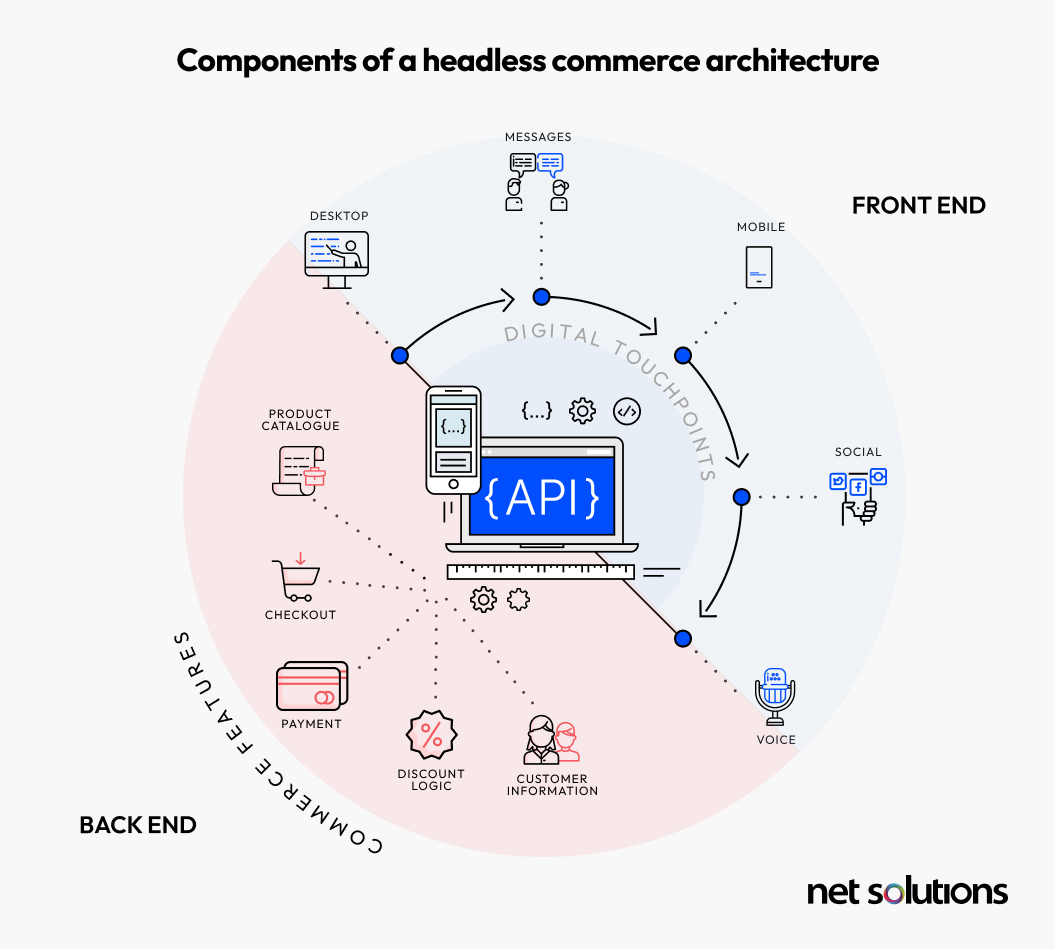
Let’s explore how this flexibility in turn supports omnichannel retailing, creating customer experiences that move across channels seamlessly.
2. Omnichannel Experience
Omnichannel experience is a key benefit of headless commerce. Omnichannel refers to creating a customer-centric experience that follows customers across digital touchpoints and even to in-store experiences. The need for omnichannel commerce reflects a desire for customers to interact with stores and make purchases on different sales channels (e.g. website, social media) or across sales (e.g. buy online, pick up in store).
Headless commerce allows you to maintain one backend (product catalog, inventory, and customer data system) to deliver a consistent experience across channels that can adjust in real-time to changes in inventory or customer interactions (personalization) across channels. Headless allows brands to scale to new sales channels and offer customized experiences across channels without worrying about backend scalability or performance issues. In fact, 82% of current headless users say it is easier to deliver consistent experiences, according to WP Engine’s State of Headless report.
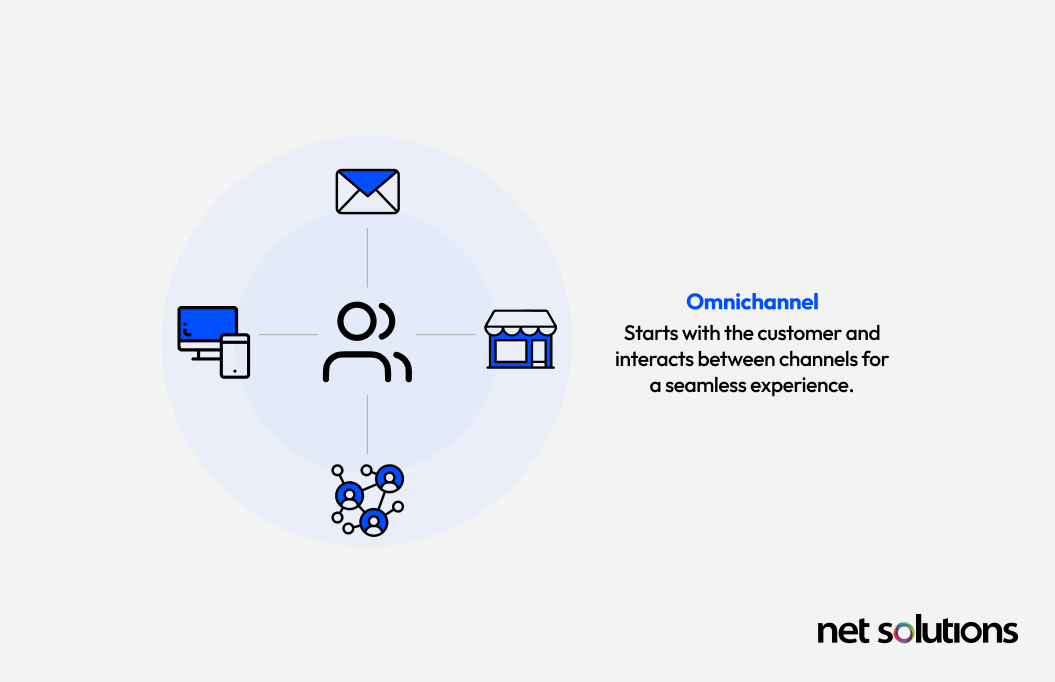
3. Faster Time to Market
Faster time to market is a key benefit of headless commerce. Faster time to market refers to the ability to quickly deploy new technologies and services. Headless commerce supports an API-first model that makes it easy to add new features or integrate with new services and to push those improvements out to all front-ends simultaneously.
Beyond the technology side of the equation, headless commerce also makes it possible for sales, marketing and eCommerce teams to add products, reuse content across channels, adjust strategies, push updates without developer assistance—said another way, headless supports a faster time to market for technology and for digital experiences.
This capability is critical for today’s experience-driven economy.
4. Improved Personalization
Personalization is a key benefit of headless commerce. Personalization refers to leveraging knowledge of a customer to tailor digital experiences to their wants or needs, whether that’s through personalized product recommendations, search results, displayed promotions, targeted offers, or more.
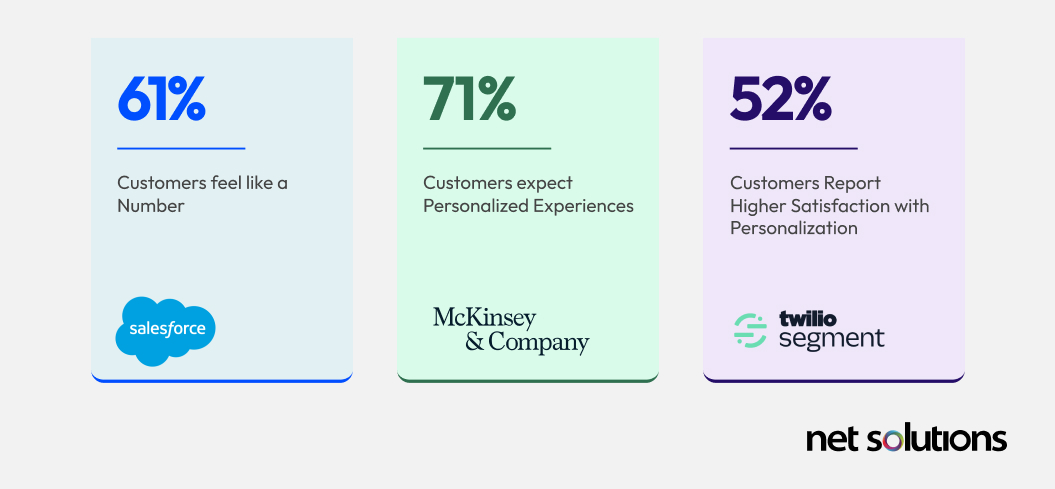
Personalization requires a powerful platform able to capture a wealth of customer data—location, customer account, wish lists, purchase history, browsing activity—and to translate that into individualized experiences. A headless platform with custom front-ends provides greater control over those experiences, customized not just per channel but potentially also per device.
Headless commerce also provides your front-end teams the capability to push content and promotions out to customers without developer assistance.
B2B Headless Commerce: B2B brands have their own special needs for personalization, serviced by specialized headless B2B platforms and editions.
5. Scalability
Scalability is a key benefit of headless commerce. Scalability refers to the capacity of a system to scale, both horizontally (e.g. across new channels) and vertically (in response to traffic).
Headless architecture is designed to support scalability, allowing businesses the chance to scale their business to new channels without impacting core commerce operations. Further, separating the front end and the back end helps headless commerce sites scale more efficiently in response to traffic.
6. Improved Site Performance
Performance is a key benefit of headless commerce. Performance refers to improvements in site speed and individual page load. Actual user experience of speed is another consideration, one that can be measured with Core Web Vitals (e.g. cumulative layout shift, largest contentful paint) or via tools such as PageSpeed Insights.
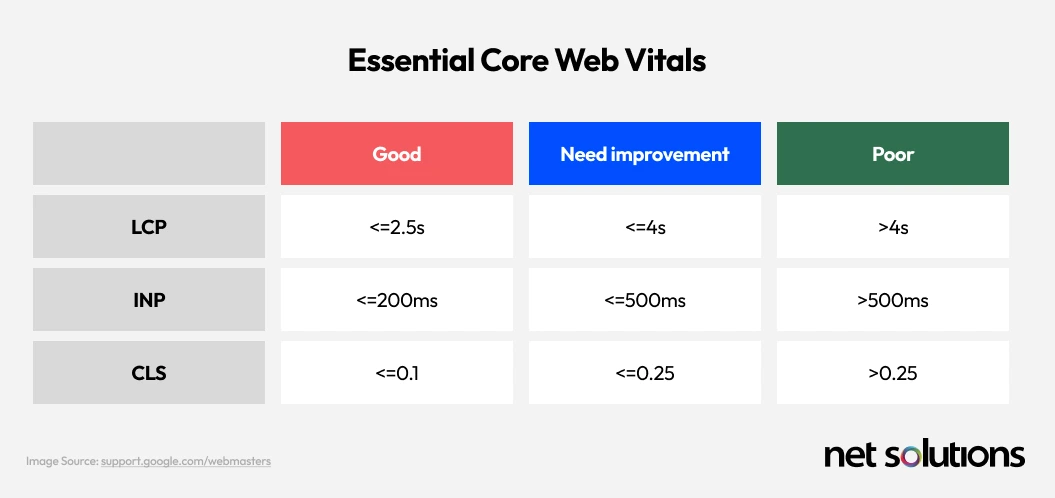
There are a number of factors that contribute to performance improvements using headless technology:
- Leaner frontends, with less code and tailored themes for each channel or device
- Content is reused (product info, marketing content) dynamically across channels, accelerating delivery and reducing server requests (thereby improving speed)
- Optimized frontends with the capacity to create mobile-specific front ends that load faster on unreliable networks and use image & caching policies that reflect mobile needs
7. Seamless Integrations
Seamless integration is a key benefit of headless commerce. Integrations refer to the capacity to connect your eCommerce system with external systems or services to share data across systems and deliver a comprehensive experience.
This includes:
- Centralizing data from with your other systems of record (inventory management, CRM, CMS, ERP)
- Integrating with new front-ends
- Integrating third-party services to support extensibility—adding features or capabilities (e.g. AI and personalization) that extend the power of your eCommerce platform
Headless architecture is designed to allow IT teams to evolve integrations and platform capabilities using APIs, all without impact to frontend experiences. As many headless platforms are API-first, using APIs as central to system design, they are created to make integrations rapid and easy. Most headless platforms also have robust marketplaces of plug-and-play integrations.
8. Technology agnostic
Being technology agnostic is a key benefit of headless commerce. Being technology agnostic refers to the capacity of development teams to choose different technologies, frameworks and languages.
Specific to front-end development in headless commerce, this allows developers to create front-end stacks to their preference and skill level vs only one monolithic tech stack that services all channels in a traditional commerce platform.
9. Competitive advantage
Getting a competitive advantage is a key benefit of headless commerce. Competitive advantage refers to offering an eCommerce experience that is superior to those of competitors as well as the agility to continue to innovate at speeds that exceed those who use traditional commerce platforms.
According to the State of Headless 2024 report by WP Engine, 80% of businesses say headless architecture keeps their business ahead of the competition, making it one of the top benefits of going headless.
10. Potential for Improved KPIs
Improved KPIs is a key benefit of headless commerce. Improved KPIs refers to eCommerce businesses seeing tangible improvements that track business performance, including improvements in conversion, lifetime customer value, return customer rate, net promoter scores, and lowering rates of churn, cost per acquisition, and cart abandonment.
The reality is, there are many factors that can influence eCommerce KPIs. Headless commerce is just one piece of the puzzle, but it can enable you to focus on improved KPIs due to:
- Improved site performance is good for SEO, improving your search rankings
- Improved site performance and personalization makes your site sticky, improving time on site, conversions, sales volumes and reducing churn (did you know more than half of customers would switch to a competitor after a single poor experience? – ZenDesk report)
- Supporting personalized omnichannel experiences meets customer demands, potentially increasing sales volume and lifetime value
- Greater freedom for front-end teams to create new content offers and perform A/B tests to optimize results
- Greater coordination between channels can support customer-facing sales and support staff to deliver the best service levels
Of course, with all these benefits, we’d be remiss to gloss over some of the challenges with headless commerce.
What Are The Drawbacks of Headless Commerce?
The key drawbacks and disadvantages of headless commerce are the following:
- Higher technical complexity: setting up headless commerce requires that developers are familiar with headless architecture and APIs and have an understanding of various technologies, frameworks and languages to support front-ends. While managing individual tech stacks can be a benefit for larger teams, it may increase workload for smaller teams.
- Higher cost: Setting up and managing multiple tech stacks can be costly, but some of that cost is absorbed through greater efficiencies in development time, since content and sales teams have more independent control over creating digital experiences.
- Composable commerce: the next evolution of headless commerce is composable commerce, where both the front-end and back-end capabilities are further modularized for maximum scalability and customizability. Some headless platforms are now also composable, either by design or through retrofit. Learn more about headless vs composable commerce.
- Replatforming: for existing eCommerce implementations, replatforming can be intimidating and carries risk.
The good news is that with the help of an experienced eCommerce partner, these challenges can be minimized. Reach out if you’re ready to switch to or start your journey to headless commerce.
Which Headless Commerce Platforms Should I Consider?
The benefits of headless commerce are appealing to both B2C and B2B businesses. With accelerated growth of the eCommerce marketplace, many headless commerce platforms have emerged. Having worked directly with these platforms to support our clients, our top picks include:
- Adobe Commerce (Magento): One of the most powerful enterprise platforms, designed for growth. Available as Magento Open Source (free) and by enterprise license, Adobe Commerce has advanced tools to support creating rich, personalized experiences across channels.
- BigCommerce: A headless platform investing in accelerated front-end development, helping reduce time to market in getting your headless commerce solution off the ground.
For an in-depth look at these and other platforms, read our guide to headless commerce platforms.
How Does Headless Commerce Differ from Traditional Commerce?
Early in this guide, we talked about how headless commerce separates the front-end and back-end of the technology stack. In traditional commerce, the tech stack is all together, a so-called “monolith.” Some of the differences are:
- Single code base: changes in the front or the back will require a full rendering of the site, potentially impacting performance, and the code base can get large and unwieldy.
- Tightly integrated front and back-end: requiring all changes to run through development, limiting customization and agility.
- Single experience: traditional commerce platforms are designed to support a single commerce experience (typically a website) and do not support the kind of differentiated channel experiences of headless.
- Limited integrations: traditional commerce platforms focus on simple site administration, but that can make it difficult to integrate with systems of record, limiting the data and capabilities you can infuse into your shopping experiences.
- Simple to code and maintain: With one tech stack, you can count on traditional platforms to be easier to set up and simpler to maintain.
Read more about traditional vs headless commerce. If you are outgrowing your traditional platform, feeling behind in the experiences you can offer or the technologies and features you want to tap into, it’s probably time to think about headless commerce.
Start Your Headless Commerce Site
In the past several years, headless commerce has gone from being a complex and overwhelming consideration to a very user-friendly decision, one that serves developers, customer-facing employees, and customers themselves. Today, headless platforms integrate accelerated development tools and even drag-and-drop editors and built in personalization capabilities to offload the complexity of headless and make it easy to get started.
There are still many decisions to be made before jumping into headless: what platform do you want to use, what front-ends are you going to support, which tech stacks are right for your team and your customers, which integrations do you need and are any custom? The great news is, you don’t have to answer these questions alone.
Whether you’re just getting started or are ready to switch platforms, partnering with Net Solutions’ eCommerce web development services can help you get there.

